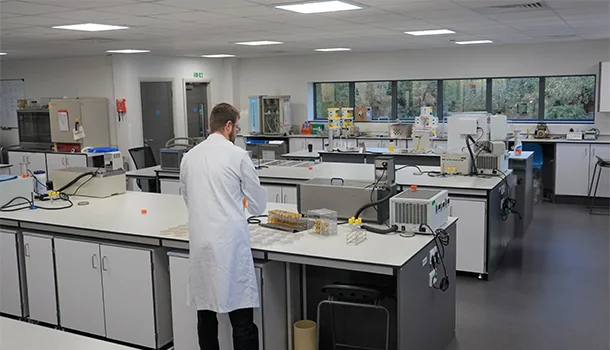Designing your Laboratory for Maximum Efficiency
Struggling with a disorganised lab space?
Having trouble navigating a crowded lab or keeping your equipment organised? Enhance your lab’s efficiency and productivity with expert design guidance.
An organised workspace not only improves efficiency through clear arrangement of equipment and materials, it also reduces the risk of accidents or contamination and further supports the well-being of laboratory users by creating a safe, orderly, and less stressful environment.
1. Understand workflow and research needs:
Effective lab design begins with understanding workflow and research needs. Bottlenecks from disorganised workspaces, inadequate tools, or outdated processes waste time, reduce throughput and increase costs. Engage lab users to map key processes, equipment, and interactions. This approach ensures the layout supports the research efficiently.
a) Evaluate your processes
Review your lab processes by mapping each step and timing how long they take. Identify delays, unnecessary activities, and areas for improvement. Standardise refined processes across the lab to minimise errors and boost productivity.
b) Minimise travel distances
An effective lab layout keeps equipment, supplies, and workstations positioned where they are needed most. By reducing unnecessary movement, staff save time and maintain focus on their work. To achieve this:
- Keep frequently used tools and instruments within easy reach.
- Place shared storage for samples and chemicals in central locations.
- Locate sinks and waste stations close to work areas for quick access.
These design choices streamline daily tasks and increase overall productivity.
c) Develop purpose driven lab zones
Laboratories often support a variety of activities, from preparation and experimentation to analysis and documentation.
Divide the laboratory into zones based on functionality and safety considerations. Clearly define areas for sample preparation, instrument stations, data analysis, and storage. Keep hazardous materials and equipment in separate zones to ensure the safety of lab occupants.
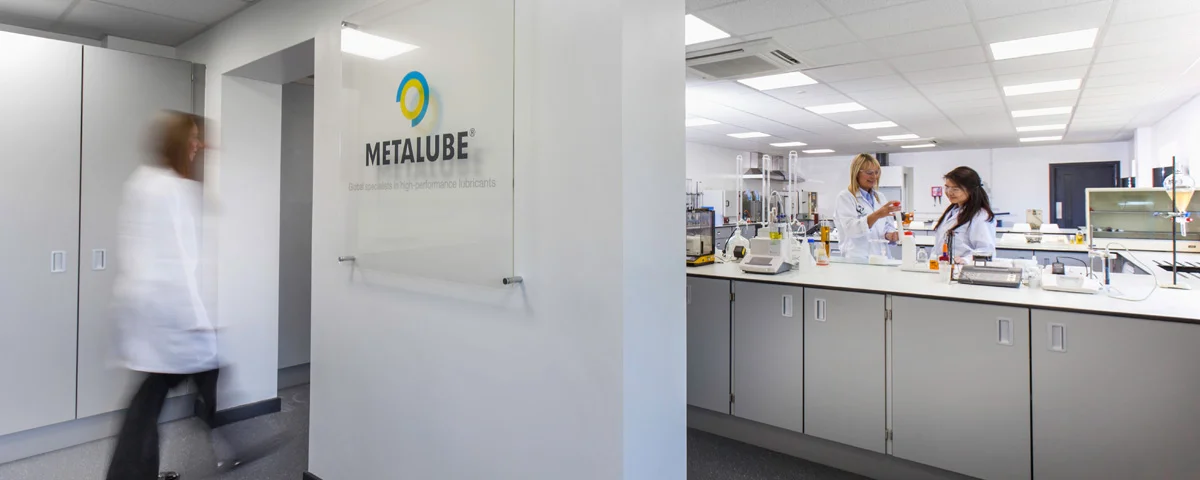
Creating dedicated zones for each function allows work to be carried out without interference or risk of cross-contamination. Examples include:
• Wet labs for experiments involving liquids or chemicals.
• Dry labs for computational or analytical tasks without chemical handling.
• Equipment areas for larger instruments such as centrifuges or incubators.
• Storage zones for samples, chemicals, and essential supplies.
Clear separation of activities keeps the lab organised, improves focus, and enhances both safety and efficiency.
d) Optimise laboratory bench space
Lab bench space is one of the most critical resources in any laboratory. To maintain efficiency, benches should stay organised and free of clutter. Here are practical ways to optimise their use:
1. Choose modular benches that can be reconfigured to suit different experiments.
2. Add overhead shelving or under-bench storage to keep supplies accessible without occupying work surfaces.
3. Equip benches with power outlets and data connections to support diverse equipment needs.
Well-organised benches help staff work faster, more effectively, and with fewer disruptions.
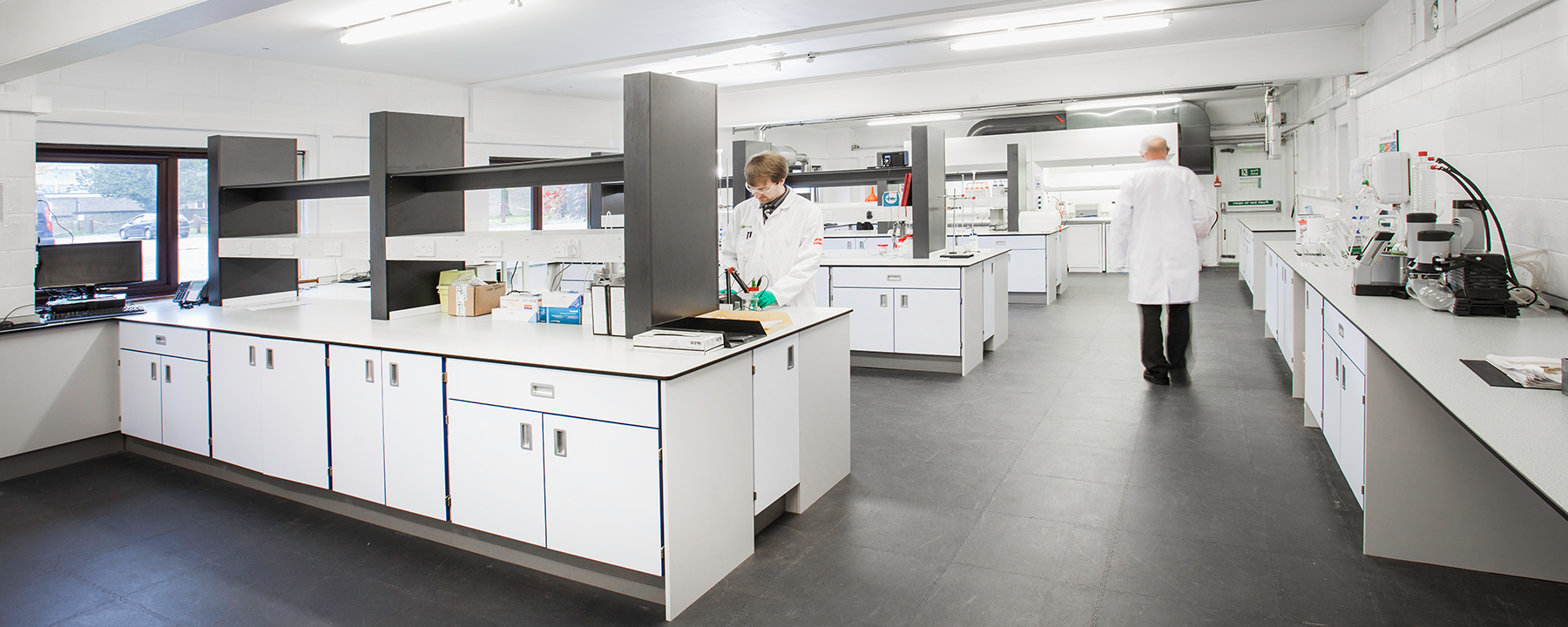
2. Flexible lab layouts
Design a lab that evolves with your research. By incorporating modular layouts, movable furniture, and adaptable storage, your workspace can easily adjust to new technologies, shifting workflows, and emerging scientific needs—ensuring efficiency, collaboration, and long-term flexibility.
Practical strategies include:
• Modular furniture can be easily rearranged or adapted to support a variety of experiments.
• Mobile workstations on wheels for easy relocation.
• Multipurpose spaces that can serve as meeting areas, analysis zones, or storage, depending on current requirements.
Ergonomics
Prioritise ergonomics in your laboratory design to support both comfort and safety. Provide adequate ventilation, lighting, and ergonomically designed furniture. Uncomfortable workspaces can quickly reduce productivity, so pay attention to details such as equipment height, especially for tasks that require users to remain in one position for extended periods.
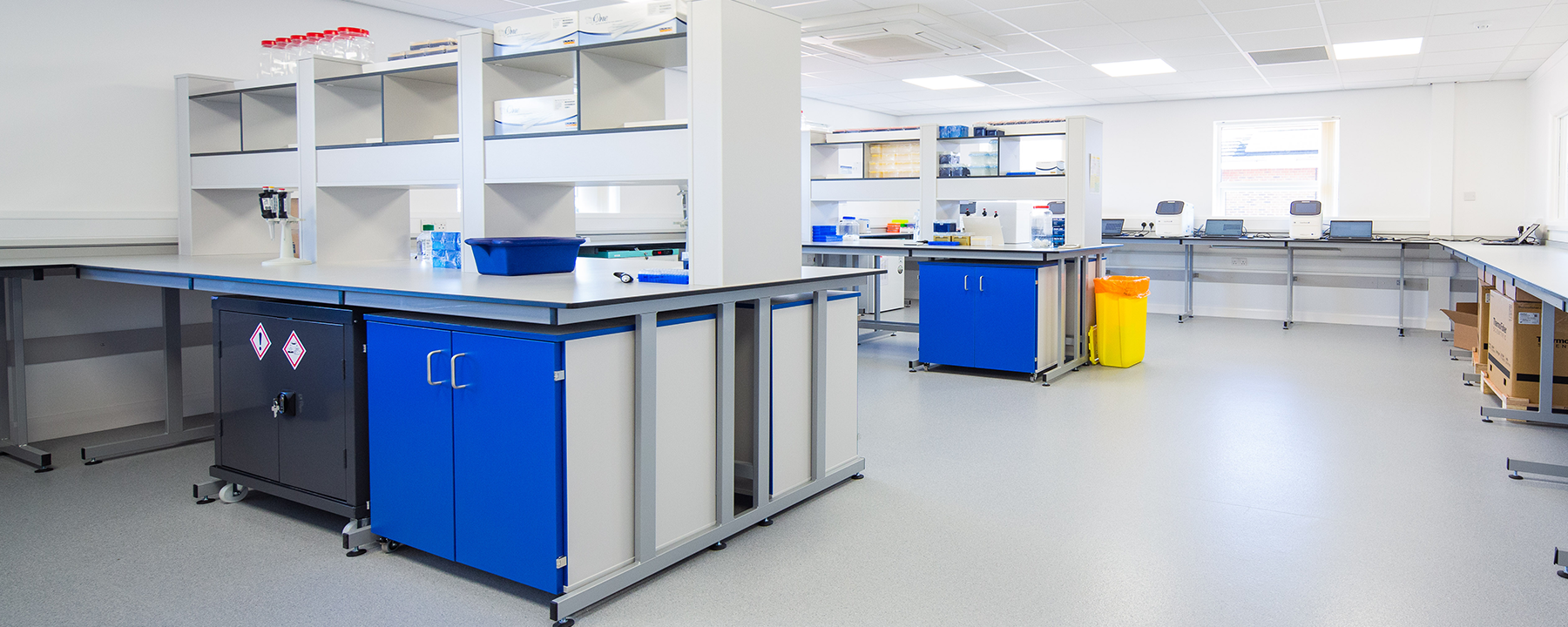
3. Invest in quality equipment and maintain It
High-quality, modern equipment boosts lab efficiency by delivering better results, handling higher volumes, and reducing downtime from technical issues. Older or poorly maintained equipment slows work, risks sample loss, and increases resource use.
Regular maintenance of equipment
Schedule regular maintenance, cleaning, and calibration to keep laboratory equipment in peak condition. Following manufacturer guidelines helps prevent failures, extend equipment lifespan, and reduce downtime, supporting a more efficient and productive lab.
4. Safety & regulatory compliance
Safety is a top priority in any lab, and the layout must meet safety requirements and regulations.
Design the lab to remain clutter-free, with clear walkways and unobstructed access to exits. Plan equipment placement carefully, considering how it will be used daily and how it affects the surrounding space. Ensure doors don’t open into work areas and provide enough room for tools or sample preparation so neighbouring workstations remain clear and functional.
When designing the labs:
• Ensure that safety equipment such as eyewash stations, fire extinguishers, and first aid kits are easily accessible from all work areas.
• Position fume cupboards and biosafety cabinets in areas with proper ventilation to prevent the spread of hazardous substances.
• Maintain clear emergency exits and pathways free of obstructions.
An efficient layout that integrates safety features not only improves workflow but also ensures compliance with regulatory requirements, creating a safe working environment for all staff.

5. Intelligent storage solutions
Maximise the efficient use of available space by implementing smart storage solutions and avoiding unnecessary clutter. Use vertical space for storage racks and cabinets and employ efficient shelving systems to keep the workspace organised. This not only enhances productivity but also creates a clean and professional environment.
Innova provides practical laboratory storage solutions, ranging from traditional pedestal cupboards to mobile under-bench systems. Our range includes open shelving of various heights and depths, burette and pipette storage, tall, wall, and under-bench cupboards, topline drawers, drawer combinations, Gratnell tray systems, and other versatile storage options.
Designed for durability and practicality, these solutions maximise lab space while maintaining organisation, safety, and efficiency.
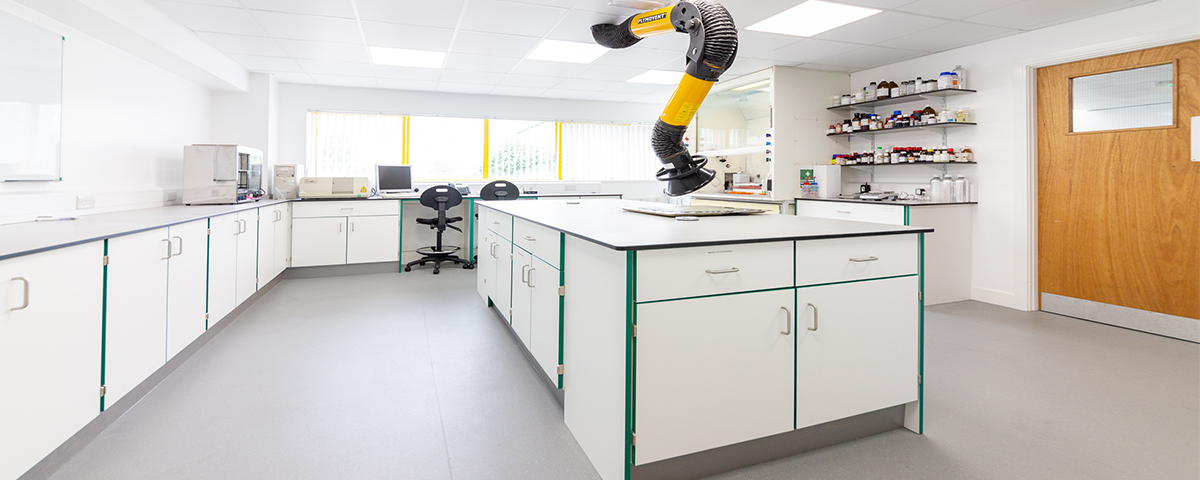
6. Collaboration spaces
Modern research frequently involves collaboration between scientists, engineers, and technicians. A well-designed lab layout encourages communication and teamwork while minimising disruptions. Open-plan areas can facilitate collaboration, but it’s important to balance them with quiet zones for focused individual work.
Placing spaces for group discussions or data review near workstations allows teams to collaborate efficiently without leaving the lab enhancing the overall research output.
Shared labs must be deliberately planned to support diverse user needs, evolving technologies, and dynamic workflows—all while maintaining safety and operational clarity.
7. Technological integration
In the digital age, incorporating technology is essential for efficient lab operations and streamlined data management. Plan the placement of computer workstations, data storage, and networking infrastructure to ensure smooth connectivity and reliable data transfer. Pay attention to factors like WiFi coverage—avoid placing computers in areas with poor signal to prevent disruptions.
A tech-friendly lab design enhances workflow and simplifies data management. Key strategies include:
• Provide ample power outlets and data ports for instruments, computers, and mobile devices.
• Use smart lighting systems that adjust automatically to occupancy or time of day to save energy.
• Implement Lab Information Management Systems (LIMS) to streamline data collection, analysis, and sharing.
Automation can streamline tasks such as data entry, results reporting, and specimen preparation, freeing staff to focus on higher-value research activities. Integrating technology into the lab layout enhances efficiency, accuracy, and overall research outcomes.

